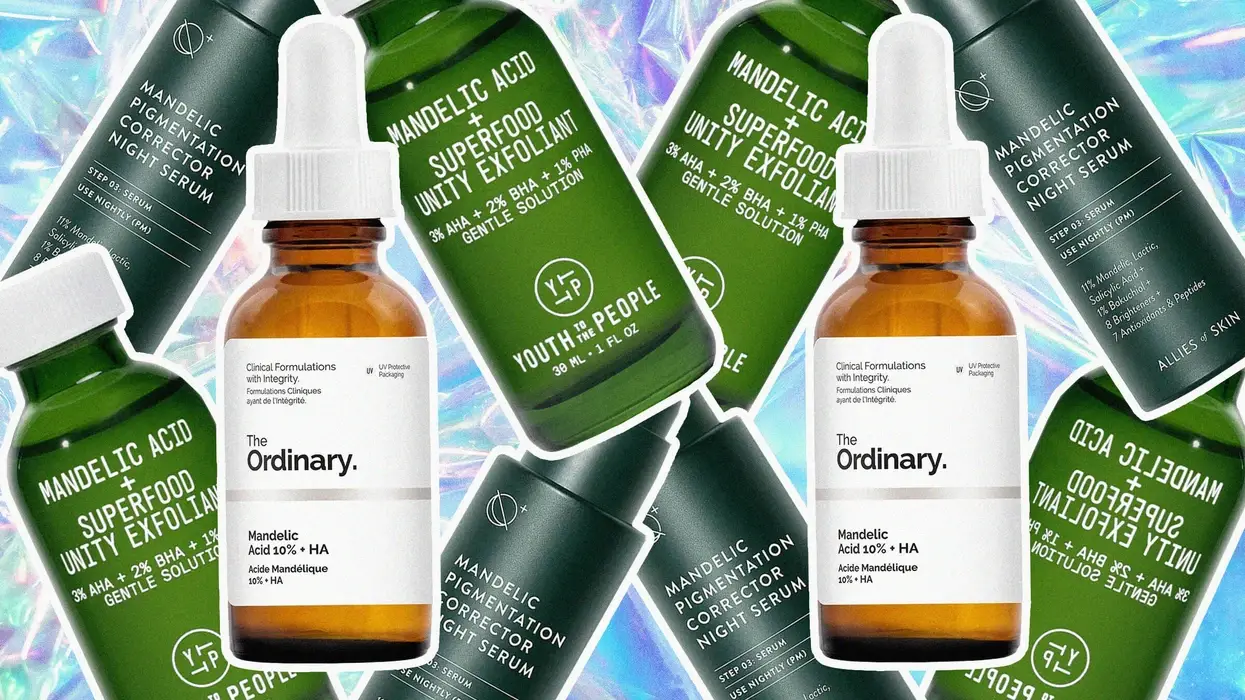
Can Black Skin Use Mandelic Acid? Here’s Everything You Need to Know
Skincare can be overwhelming for anyone. But if you have a darker skin tone, navigating skincare products can be even more confusing and, at times, frustrating.
Melanin-rich skin is beautiful and resilient. But it also comes with unique skincare needs—especially when it comes to hyperpigmentation, post-inflammatory marks, and uneven skin tone.
The question on many minds: Can Black skin benefit from mandelic acid? The short answer is yes—but how you use it matters.
In today’s post, we’re diving deep into how mandelic acid works and why it may be one of the best exfoliating acids for dark skin.
Understanding Darker Skin Tones
People with deeper complexions have more melanin, which gives the skin its rich color. But more melanin also means more melanocytes, the skin cells that produce pigment.
That’s why even minor injuries, breakouts, or inflammation can result in stubborn dark marks. This process is called post-inflammatory hyperpigmentation (PIH)—and it’s more common in Black and brown skin.
Melanin-rich skin is also more prone to melasma, sunspots, and acne scarring. But while it’s more prone to hyperpigmentation, it’s also less prone to wrinkles and tends to age more gracefully.
This means exfoliation is still important—but it has to be gentle. The wrong exfoliant or too harsh of a product can worsen discoloration and damage the skin barrier.
That’s where mandelic acid comes in.
What Is Mandelic Acid?
Mandelic acid is a type of alpha hydroxy acid (AHA), derived from bitter almonds. What sets it apart is its large molecular size, making it much gentler than other acids like glycolic or lactic acid.
Here’s a breakdown of what mandelic acid does:
Gently exfoliates the surface of the skin by dissolving dead skin cells.
Helps fade hyperpigmentation, melasma, and acne scarring.
Minimizes the appearance of fine lines and smooths skin texture.
Reduces breakouts by unclogging pores and reducing bacteria.
Provides a chemical exfoliation that is well-tolerated by sensitive or darker skin tones.
Because of its unique size and structure, mandelic acid penetrates the skin slowly and evenly, which helps prevent irritation and redness—two major concerns for darker skin tones.
Why Mandelic Acid Is Ideal for Black Skin
Darker skin tones can be more reactive than lighter tones. Strong exfoliants can backfire, triggering inflammation, which leads to even more pigmentation.
Mandelic acid avoids this issue by being slow-absorbing, non-irritating, and effective over time. This makes it one of the most recommended acids by dermatologists for Black skin and other melanin-rich tones.
Let’s break down some of its unique advantages:
1. Gentle Yet Effective
Mandelic acid removes dull, dead skin cells from the surface. This reveals smoother skin while helping fade dark spots gradually.
2. Fights Acne Without Over-Drying
It has antibacterial properties that fight acne-causing bacteria and keep pores clean—without stripping the skin.
3. Targets Pigmentation Safely
It not only exfoliates the skin but also works at a cellular level to inhibit melanin overproduction. This helps lighten dark spots without bleaching the skin.
4. Reduces Risk of Irritation
Because it absorbs slowly, the risk of post-treatment inflammation and PIH is lower than with stronger acids.
How to Use Mandelic Acid on Dark Skin
You’ll find mandelic acid in many skincare products, including:
Cleansers, Toners, Serums, Peels, Moisturizers, Face masks
To get the most out of mandelic acid, apply your products from thinnest to thickest consistency. This helps your skin absorb the ingredients in the correct order.
A Sample Skincare Routine with Mandelic Acid:
Cleanser: Start with a gentle, hydrating cleanser.
Toner (optional): Use a balancing toner if needed.
Mandelic Acid Serum: Apply a pea-sized amount. This step delivers targeted exfoliation and brightening.
Hydrating Serum: Add hyaluronic acid or niacinamide to lock in moisture and calm the skin.
Moisturizer: Use a barrier-supporting cream with ceramides or squalane.
SPF (in the morning): Always finish with broad-spectrum sunscreen SPF 30 or higher.
Tip:
If you’re new to mandelic acid, start using it 2–3 times a week. Gradually increase frequency based on your skin’s tolerance.
Can You Combine Mandelic Acid with Other Ingredients?
Yes, mandelic acid plays well with other ingredients—just avoid mixing too many actives at once if you’re just starting out.
Ingredients That Work Well with Mandelic Acid:
Hyaluronic Acid: For deep hydration and plumping.
Vitamin C: For antioxidant protection and brightening.
Niacinamide: For calming inflammation and boosting skin barrier health.
Azelaic Acid: Another pigmentation-fighting ingredient safe for darker skin.
Retinol: Use on alternate nights to avoid irritation.
Avoid combining mandelic acid with strong AHAs or BHAs (like glycolic or salicylic acid) unless your skin has adjusted.
Does Mandelic Acid Lighten Skin?
No, mandelic acid does not bleach or lighten the skin tone. It evens out skin tone by reducing dark spots, sun spots, and melasma. This helps your natural tone look more even, radiant, and smooth.
With consistent use, many people notice a visible reduction in discoloration and an improvement in overall skin clarity.
Is Mandelic Acid Safe for Sensitive or Reactive Black Skin?
Yes, mandelic acid is one of the best exfoliating acids for sensitive, reactive, or rosacea-prone Black skin.
Because it’s so mild, it’s often used in chemical peels designed specifically for darker skin tones. These peels treat hyperpigmentation, acne, and dullness without risking inflammation or PIH.
However, even gentle acids can increase sun sensitivity. Always apply sunscreen daily, even on cloudy days or when staying indoors.
Who Should Avoid Mandelic Acid?
Most people can use mandelic acid without issue. But if you:
Are allergic to almonds or nuts, consult a doctor first.
Have eczema or open wounds, avoid using any exfoliating acids.
Are on prescription medications for acne or rosacea, talk to your dermatologist before combining products.
Always perform a patch test when trying a new product—especially if you have melanin-rich skin that is prone to dark marks.
Final Thoughts: Should You Try Mandelic Acid If You Have Dark Skin?
Absolutely! Mandelic acid is one of the most skin-friendly acids available. It’s ideal for dark skin because it:
Exfoliates gently, Fades dark spots, Fights acne, Improves texture, Boosts brightness, Works without irritation
The best part? It works with other skincare ingredients and can easily be added to most routines.
Whether you’re dealing with acne scars, uneven tone, or just want your skin to glow, mandelic acid is a great place to start.
Just remember—consistency is key, and your skin deserves time and patience.
Need Help Building a Routine?
Still unsure how to incorporate mandelic acid into your skincare routine?
Visit a dermatologist or esthetician who has experience working with melanin-rich skin.
Follow us on Instagram @BeautyInsiders for expert tips, Q&As, and product recommendations.
Sign up for our newsletter for weekly skincare tips tailored for all skin tones.


